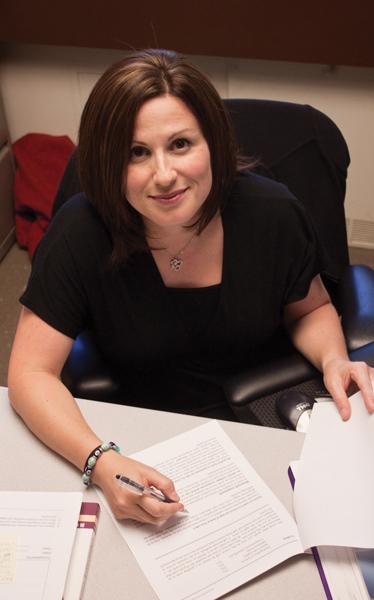Professors get $1.5 million to study effects of program

Howell 1:Jessica Howell and two colleagues received $1.8 million for EAP research. :Julie Keefer – State Hornet
September 1, 2010
A Sacramento State economics professor and two colleagues were granted $1.8 million in federal funds this summer to study college readiness of California State University students.
Jessica Howell, UC Davis education professor Michal Kurlaender and University of Minnesota sociology professor Eric Grodsky’s research will focus on the effectiveness of California’s Early Assessment Program. The program offers a voluntary exam to all public high school juniors in California to test their readiness in college level English and math. Students who aren’t ready can take additional courses their senior year.
The goal of the program is to lower remediation, the lower-level college preparatory classes that do not count toward a degree, Howell said.
“We need to know if EAP works to achieve its goal,” Howell said. “If we know how well it works, and also have some good quantitative evidence for how it works, then policy makers are much better informed about where California’s scare resources should be directed, and how EAP could be tweaked toward the goal of increasing academic preparation.”
The professors began collecting data for the study earlier this summer, Howell said.
“When we have more information we can pass it on to policy makers and the education community,” said Kurlaendar, who’se heading the four-year study. “If we show that EAP works, we can encourage teachers to encourage students to participate.”
The professors applied for the grant in October 2009 through the U.S. Department of Education’s Institute of Education Sciences. The money will be used primarily for hiring research assistants, and for reducing the professors’ teaching loads to allow time for research, Howell said.
In 2007, the trio did a study of the effectiveness of the program at Sac State. They found that students who took EAP English had a 6 percent lower probability of needing remediation, and students who took EAP math had a 4 percent lower probability.
Now the professors want to see if results of this study hold true across the 23-campus CSU system.
“If those results hold across the whole CSU, then the Sac State results would scale up to an estimated system-wide impact that implies roughly 3,000 fewer remedial students in English and 2,000 fewer remedial students in math,” Howell said.
In addition to testing for high school juniors, the program involves instruction for high school seniors who want to be better prepared for college, and professional development for 12th-grade English and math teachers, according to the CSU website.
Their research will focus on three questions: Does participation in the program reduce the probability that a student needs remediation upon entering CSU? Does the effect ofthe program participation vary with student characteristics like gender, ethnicity and academic achievement? Do students who participate in the program use their senior year in high school to become better prepared for college?
The research is a little bit personal for Howell, who has taught Introduction to Microeconomics since 2003, and has seen many of her students struggle with both math and reading.
“If these students had a little wake-up call just a few years ago, they would be able to tackle the material in front of them,” Howell said.
Howell and her colleagues will likely be sharing their research results with California Community College professionals, she said.
This year, 32 state community colleges began accepting EAP scores from high schools as a way of exempting students from remediation courses, Howell said.
About 50 of the state’s 112 community colleges could begin accepting scores by the end of the year, said state EAP coordinator Sonia Ortiz-Mercado.
“The more prepared we can get them as they come into our system, the better they’re going to do once they get here,” Ortiz-Mercado said.
The professors also plan to share their research with college chancellors, school districts, superintendents and the state Legislature, Howell said.
“Our findings will probably be useful to a wide array of policymakers, all looking for ways to increase academic preparation going into college and, thereby, student success,” she said.
Ken Paglia can be reached at [email protected]






































































































































